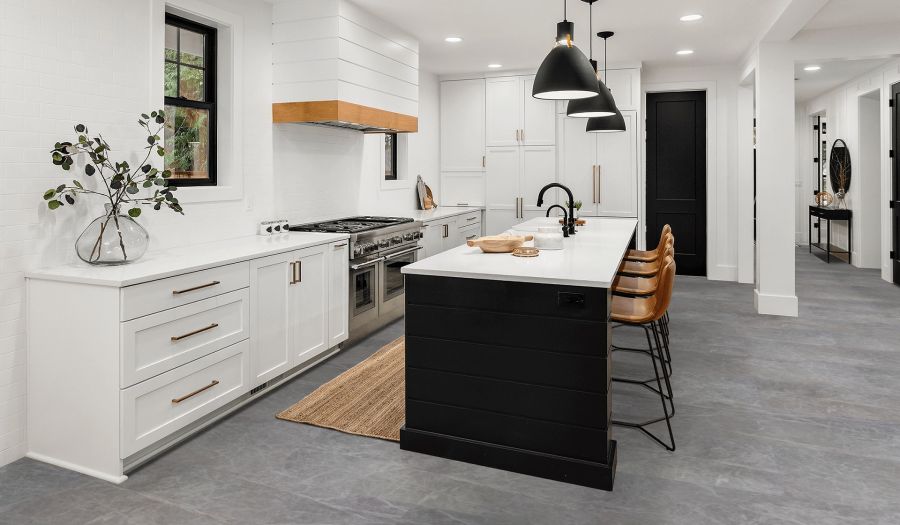
Why Subfloor Preparation is the Key to Great Flooring
Here at Top Carpets and Floors, we often get called in to redo poorly installed flooring. Whether this was a do-it-yourself job or handled by installers who did not know what they were doing, a common issue is the subfloor preparation. It also does not matter how well flooring is installed – if the subfloor preparation is neglected, your final product will not last very long. Ensuring the substrate floor is in the right condition is key to seamless, long-lasting and beautiful floors.
Why is the Subfloor Important?
We think of our floors as the ground surface we can see in our homes – but there is more to it. Beneath the plush carpeting or durable laminates, there is a substrate layer that forms the foundation of your flooring. There are various kinds of subflooring, such as plywood, concrete and sometimes cement in basements.
Some homeowners wish to install their new flooring directly over the old flooring, such as tiles – in this case, the old flooring becomes the subfloor in need of preparation. This in itself comes with issues, however, as it may add too much weight to the floors or mean that the added height makes it difficult to open or close doors.
Major Considerations When It Comes to Subfloor Preparation
The one aspect that many homeowners fail to recognise before it is too late, is how difficult of a task it is to prepare a substrate floor. It requires a high level of expertise and specialised tools. Failure to pay attention to important details could end in a disappointing result and cost more to rectify. For this reason, we at Top Carpets and Floors always encourage a professional installation over a DIY project as it guarantees a seamless final product. Some factors that will influence subfloor preparation include:
- What kind of flooring products are being installed (such as laminates, luxury vinyl tiles, carpeting or engineered wood).
- The PH and moisture level of the current substrate floor.
- How structurally sound the substrate is, what condition it is in, and whether compounds or sealers have been used on it.
- Other issues such as crawl spaces in some buildings.
Subfloor Preparation Steps No Matter the Installation
Various installations will have their own needs when it comes to preparing the substrate floor, but there are a few steps that every installation requires. These steps are as follows:
- Fixing any structural damage and defects: Broken concrete, warped, swollen or rotting wood, or cracks anywhere need to be rectified. Anything that compromises the integrity of the substrate floor will likely negatively impact your installation.
- Evening out the substrate floor: It is of the utmost importance that the subfloor is completely flat, even and smooth. Self-levelling screed is often thought of as a miracle solution that fixes any unevenness, but it cannot level out very large variances in the floor’s height. During this phase, it must also be determined that the substrate floor is solid enough to support the weight of the installation.
- Ensuring the surface is free of moisture and debris: Minimum moisture levels amongst floors will vary, but this should be tested by professionals. In the end, you do not want moisture or dampness rising through to your flooring system as it will cause damage. During preparation, the subfloor must be cleared of all dust, debris and contaminants that may affect how well its surface bonds to the installation’s underlayment.
- The kind of priming product you will require: In certain cases, it may be necessary to use a priming system that will allow the flooring installation to best adhere to the subfloor.
- Keeping the type of floorcovering in mind: Different flooring manufacturers will have various subfloor preparation best practices in line with their product ranges. One thing that is required across the board, however, is that the subfloor be level and free of any defects to ensure a rapid and seamless installation.
Proper Subfloor Preparation Avoids Future Problems
Your final floorcovering installation will only be as good as your substrate floor. A perfectly installed flooring product will still underperform if the subfloor was not sufficiently prepared. Failure to give this phase of installation the attention it requires may lead to major issues.
Uneven areas in the floor and surface variations are not just unappealing to look at but can lead to additional wear on higher spots and excessive sagging in other places. There may be movement or shifting in the floors beneath one’s feet, an uncomfortable feeling while walking, and even sounds such as squeaking and creaking. Eventually, problems with the substrate floor could lead to the separation of installed planks and damage that requires an entire overhaul of the flooring.
Our Professionals Can Help You
We know how tricky preparing a substrate floor can get. Fortunately, our years of experience and commitment to customer satisfaction means that we know how to get the job done right. With us, you are guaranteed a seamless result and can rest assured that your chosen flooring solution will last for years to come.
If you would like to find out more about our services, don’t hesitate to contact us today.


